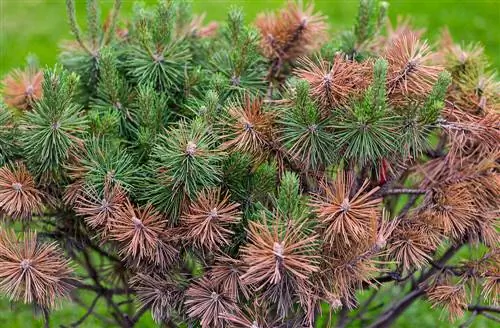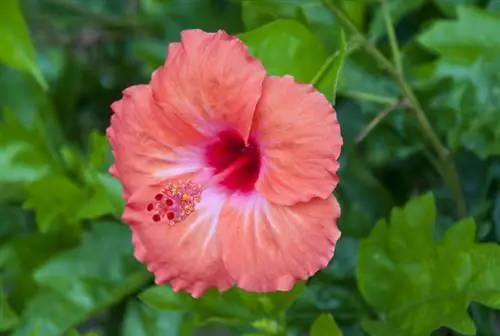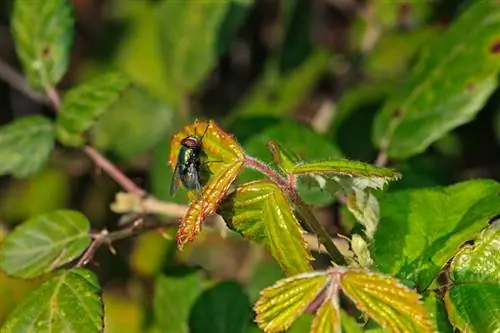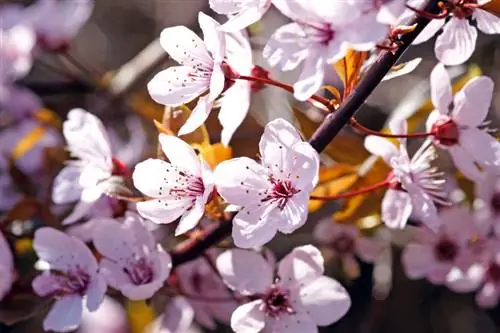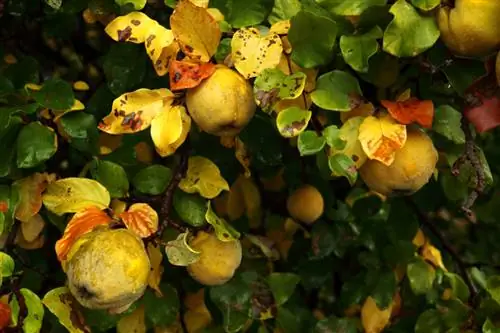- Author admin [email protected].
- Public 2023-12-16 16:46.
- Last modified 2025-01-23 11:21.
Most coniferous trees are considered robust, but can still be attacked by various pathogens. Trees of life (thuja) and spruces are particularly at risk, for example from fungi. Many of the microorganisms affect different species, but some are very specialized.
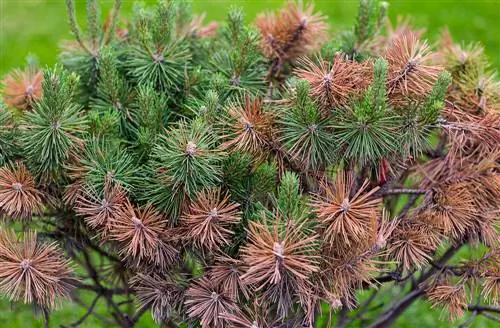
What diseases can affect conifers and how can they be prevented?
Coniferous tree diseases can be caused by harmful fungi, location errors or care errors. Common parasitic diseases include rust, needle brown, root and stem rot, Pestalotia twig dieback, and gray mold. Prevention can be achieved through suitable location selection, soil conditions and care.
Illnesses caused by location or care errors
In addition to a simple infestation with a harmful fungus or other pathogen, a conifer can also become ill as a result of an unsuitable location and/or incorrect care. The causes are not mutually exclusive, but rather dependent on each other: Many microorganisms primarily attack trees that are already weak and can no longer defend themselves. To prevent illness, you should especially avoid these causes:
- unsuitable locations (too much/too little light)
- compacted soil / waterlogging
- dry ground
- long, dry frost periods in winter
- Nutrient deficiency (rare)
- Overfertilization (more common)
Common parasitic diseases
If signs of illness appear on a conifer, they can have various causes. The needles are often affected and turn brown and fall off.
Rust
There are various rust fungi, such as pine bubble rust and juniper rust (the latter causes the dreaded pear rust on pears), which hinder the transport of water in the trunk and branches. As a result, infected tree parts turn brown and eventually die due to lack of nutrition.
pin tan
Coniferous browning also causes shoots and branches to die, which is caused by various fungi. The disease often becomes apparent in spring, when individual shoot tips initially turn brown and then die.
Root and stem rot
This disease is also known as Phytophthora blight and is caused by the soil-dwelling fungus Phytophthora cinnamomi. The infection occurs mainly as a result of waterlogged soil, with the roots rotting first and then the trunk later. A typical sign is spongy, purple-colored areas on both the roots and the trunk.
Pestalotia branch dieback
This is a weakness parasite that primarily affects already weakened conifers. Pestalotia funerea causes the shoot tips to turn gray.
Gray horse
Botrytis cinerea has a large host range and does not stop at conifers. Infection occurs primarily in cold, damp springs and causes the young, still soft shoot tips to turn brown.
Tip
Some diseases only affect certain types of coniferous trees, while neighboring trees are not affected. The cause is microorganisms or pests that have specialized on certain hosts. A typical example is the pine shed, where a large proportion of the needles are shed.

